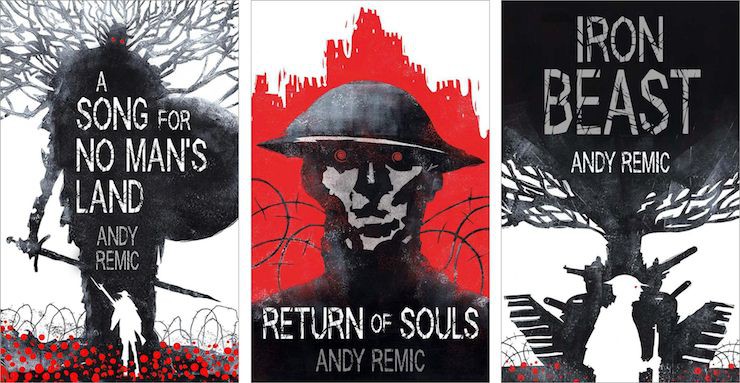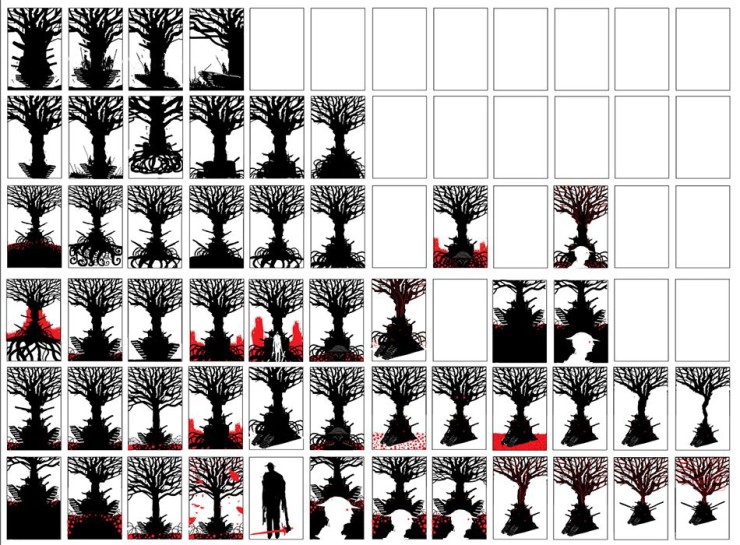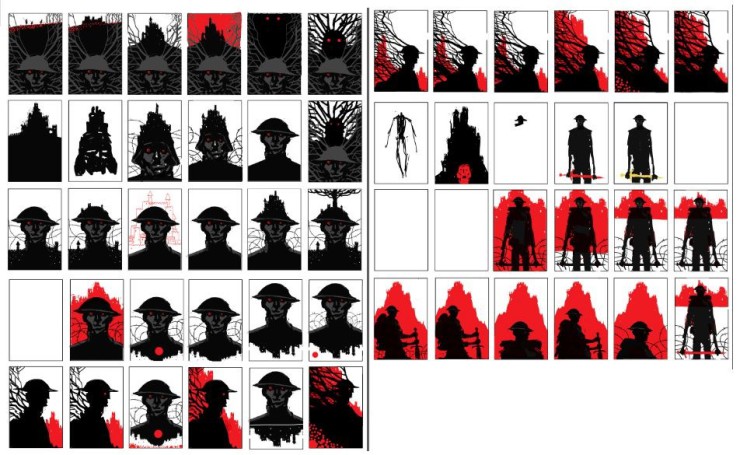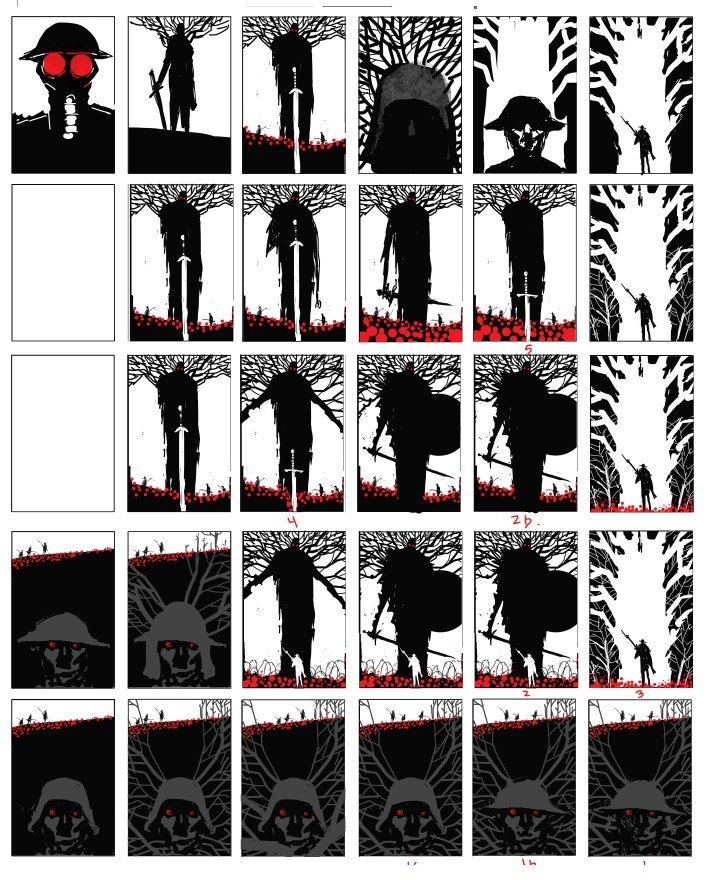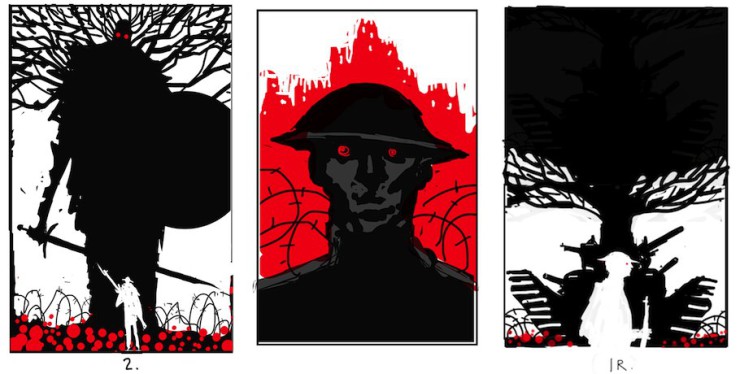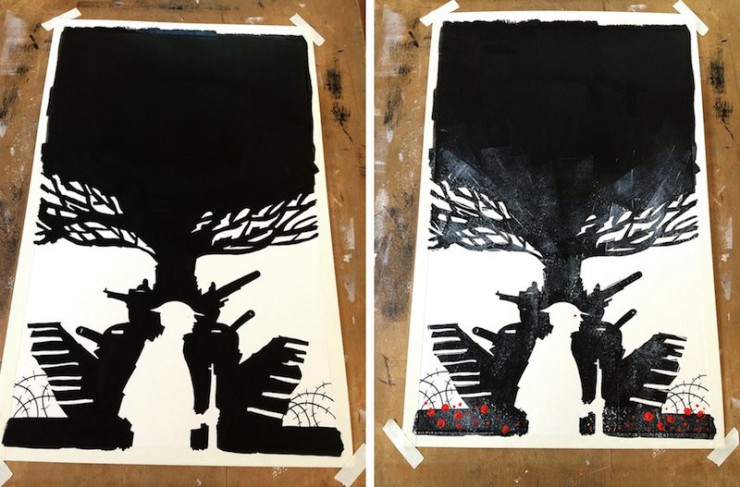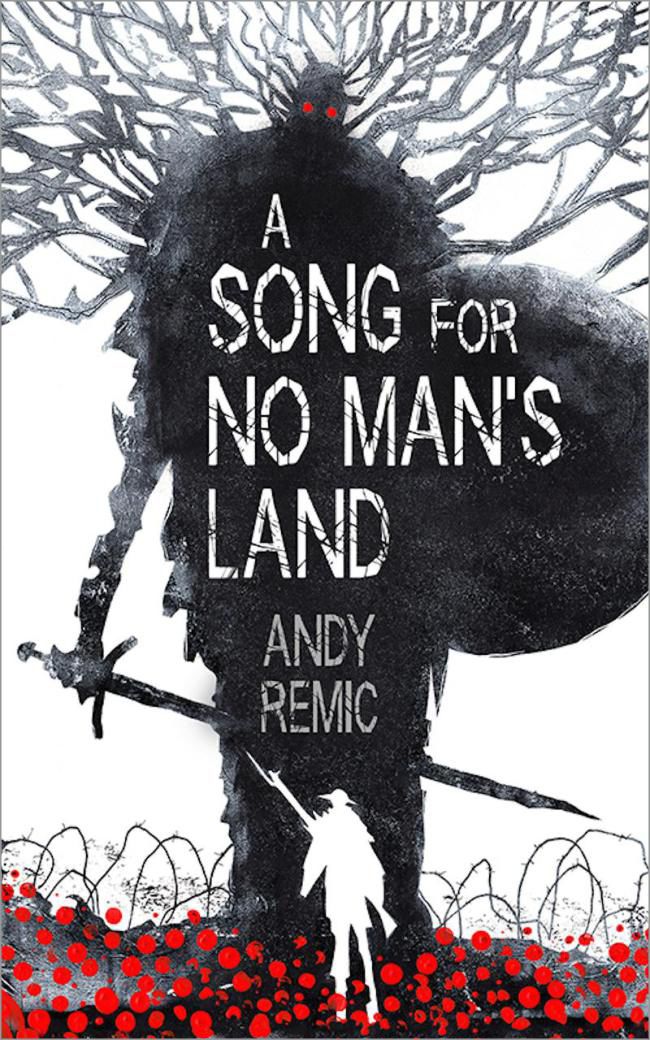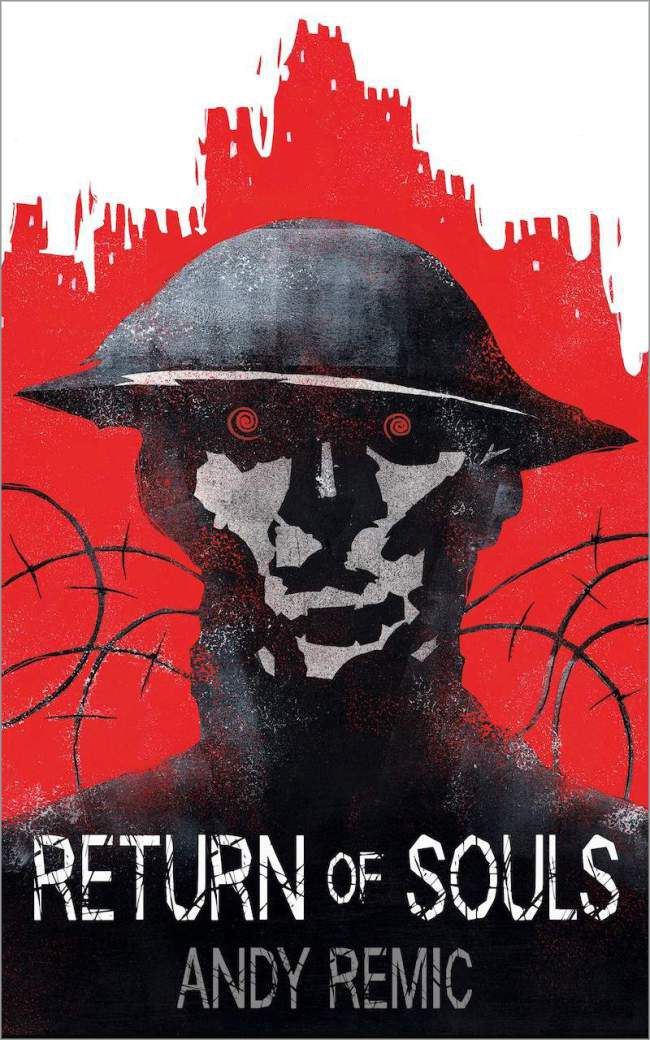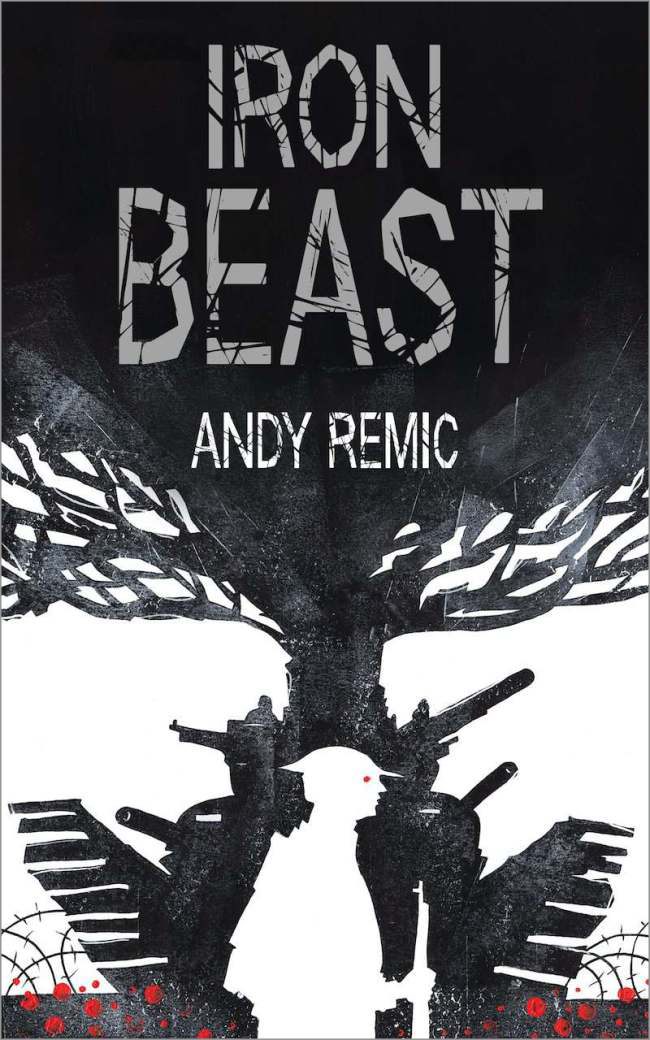We’re pleased to reveal the covers for Andy Remic’s trilogy of dark fantasy novellas set in the trenches of World War I. Book 1—A Song for No Man’s Land—comes out next February, to be followed shortly after by Return of Souls and The Iron Beast. Below, artist Jeffrey Alan Love walks us through the process of creating these three great covers!
(Click any image to enlarge.)
This trio of novellas by Andy Remic was one of those projects where the initial brief—World War I combined with Welsh Mythology—felt close to home. Growing up in a military family, with six years spent in Europe as a child playing in old forests, climbing all over ancient castles, my imagination has always had a strong mix of military and myth rolling around in it. One of the things that has always struck me about Europe is how you have all these different eras coexisting next to, upon, and around each other. “Upon this site in 1376, in 1501, in 1700, in 1886, in 1914…” and on and on. History mixes and intermingles there, it is a part of daily life, not just something in a textbook, and with that vast weight of history comes a very real, to me at least, feeling of the Other, that there is something else out there, something that myth tries to explain. Reading further I came across this description—”…wandering the Welsh forests and mountains, hunted by fictional ghosts called Skogsgra, shapeshifting woodland creatures made of tree flesh…” Shapeshifting tree ghosts? How fast can I say yes to this job?
I work on sketches digitally. If I work with a pencil at this stage it is too easy to get timid, or to start to chicken scratch away, worry too much about how the drawing looks instead of whether or not the composition is effective and communicating what I want it to. I focus on shape, value, and edge. Are the shapes interesting? Which edges should be hard, which broken, which soft? Are there dark shapes on light shapes and vice versa so that silhouettes are reading? Can I lose any edges? How much information needs to be there to know that the tree is actually a GHOST MADE OUT OF TREE FLESH? Do the relationships between the various elements in the picture communicate the emotion or story or mood that I want it to? If not, can I make something bigger? Something else smaller? I’ll make a giant grid of boxes and start playing around. The nice thing about working digitally is that I can copy and paste over and over, trying out subtle changes and adding new elements or subtracting things that aren’t working in seconds, without having to redraw the sketch repeatedly. I can draw a TREEGHOST and make it tiny in one sketch, make it huge in another, and see which version is working (I found with treeghosts usually the bigger the better.)
For me the sketch phase is the most important. I learned early on to never say to myself “I’ll figure that out in the final” or “I’ll fix that later”—figure it out NOW and fix it NOW. By having my sketches totally figured out, when it comes time to make the final I can have fun, trying different techniques and materials, because as long as I stick to the road map I created with my sketch (VALUE/SHAPE/EDGES) I can use virtually any technique or media.
Once the sketch is approved I’ll transfer it to paper and block in the big shapes. As they say, work from general to specific. In the past year I’ve moved to working completely traditionally on my finals, usually with acrylic and ink on paper or bristol. I didn’t know I’d be doing a process post for these, so I didn’t take many photos, apologies if this is a bit like the old “step 1: draw a circle, step 2: draw the rabbit” gag—hopefully there’s enough there to see what happens. After the big shapes are down I apply paint using a variety of paint rollers from the hardware store, brayers, rolling pins, sticks I found on the beach, sponges, crumpled up paper, tin-foil, old fabric, my fingers, pieces of plexiglass—just about anything can be used to create an interesting textural effect. I applied the red paint with the eraser end of a #2 pencil. You never know until you try what will work—I try to have a no fear approach to making the finals. If I mess up I only have so far to fall, since I’ve figure out all the hard stuff with my sketch, and because I am insane about time management I usually have plenty of time to work on the final before it’s due. If I overdo it and take it past the point of saving I can just start again the next morning. No overnighters for me. I try to have lots of happy accidents happen, little moments that I couldn’t plan that make the piece better than I consciously could have achieved. The art that happens by being open to accidents is usually way better than the art I consciously try to create, but it needs that skeleton of a strong sketch/composition to work.
Once I feel good about the final I’ll scan it, spend a frustrating amount of time removing all the cat hair from the image, and then send it in. While I always want people to respond well to the image, what I really want is for it to make them want to pick up the book and read it. I want the viewer to have the same feeling I had as a child looking at John Harris, Michael Whelan, Leo and Diane Dillon, Frank Frazetta, Brom, Keith Parkinson,Don Maitz, Ian Miller and all those other artists that encouraged my dream-filled little head. Hopefully these have done the job.
Thank you to the wonderful Irene Gallo and Christine Foltzer for letting me be a part of the Tor.com team—as a reader and fan I can’t get enough of the work coming out of it.
Book 1, A Song for No Man’s Land, publishes February 9, 2016 from Tor.com in paperback, ebook, and audio format. Pre-order now from Amazon, iTunes, or Barnes & Noble.
Jeffrey Alan Love is an award-winning illustrator whose clients includes TOR Books, Scholastic Books, The New York Times, and Scientific America.










